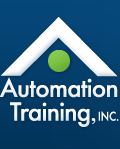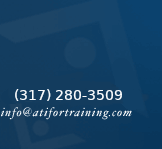|
|
Course Description: |
|
Students participating in this course will work with hydraulic circuits learning advanced troubleshooting techniques. Students will work with hydraulic components and learn how to identify and select them for efficient and safe hydraulic circuits. |
|
|
Prerequisites: |
|
Industrial Hydraulics - Level 1 |
|
|
Course Objectives: |
|
At the completion of this course, students will be able to demonstrate proper safety techniques as they relate to hydraulic systems and components, will be able to troubleshoot hydraulic systems using schematics and prints, will be able to identify common failure modes and will be able to use skills learned to reduce potential system failures. |
|
|
Outline: |
|
Safety - safe working habits, identifying safety hazards, safety in circuit design, safely troubleshooting a hydraulic circuit
Fluid Power Principles and Laws - review the basic principles of force, flow, pressure, work and power, Pascal's Law and pressure/force/flow relationships
Hydraulic Circuit Components - pumps (positive displacement pumps, principles of operation, pressure compensation, load-sensing), motors (principles of operation, selection for circuit requirements), cylinders (types, seals, sizing), directional controls (2-, 3- and 4-way valves, valve terminology, manual, solenoid and pilot operation, proportional valves), flow control valves (non-compensated, pressure-compensated, temperature-compensated, principles of operation), pressure control valves (relief valves, sequence, counterbalance, unloading, pressure reducing valves, principles of operation), check valves (pilot-operated, shuttle, rectifier), lines and fittings (pipe/tube/hose, sizing, installation), fluids (types and characteristics), accumulators, actuators
Contamination and Filtration - selecting filters and preventing contamination
Advanced Troubleshooting - identifying installation problems, identifying circuit failures, failure symptoms, diagnostic equipment, pressure/flow issues, common cylinder problems, common pump problems, leakage control, maximizing efficiency in the hydraulic circuit, techniques to prevent component and circuit failure
Adjustment and Calibration - adjustment and calibration of all components in the hydraulic circuit |
|
<< Back to Courses Page
| Return to the top ^^ | Printable Version
| |
|


